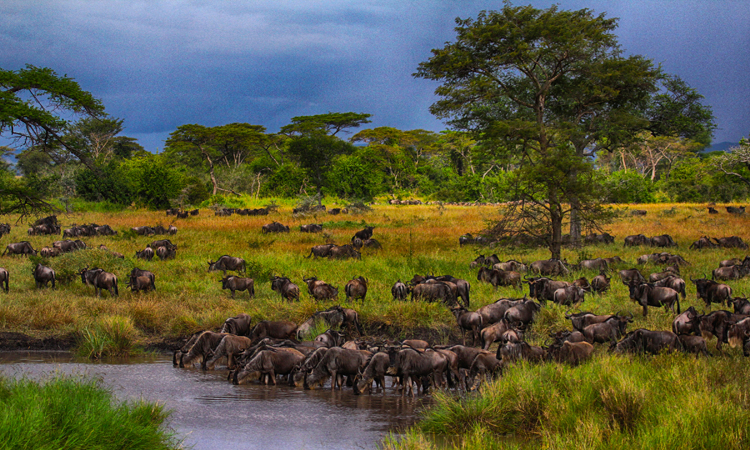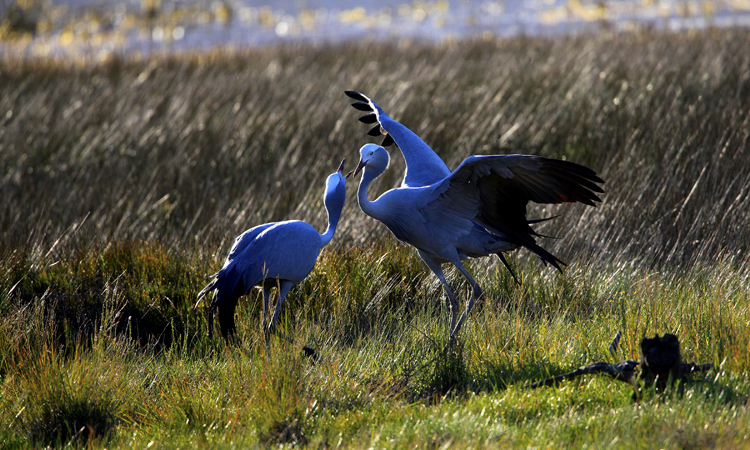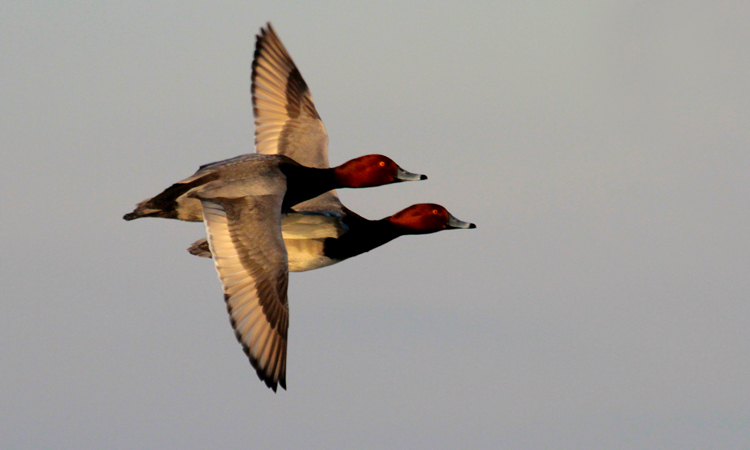10 Recommendations
Dave Taylor’s Nature Photo Blog
Nature Photography: Ten Recommendations
There are many things that go into making an exceptional photograph of a natural event. As discussed in a previous column luck and technical expertise certainly are necessary. But there are many more factors. In this blog I will share ten recommendations to help achieve that goal.
The balance between dark and light is important. The master artists (painters) have a lot of theories as to what the ideal percentages of each should be. Recommendation #1: Read up on the work of classical artists and try to knowingly apply this to your compositions.
I remember reading one of Robert Bateman’s books on his evolution as an artist. At one point he notes that he painted only abstract art. This was before he became well known for his wildlife paintings. However he continues to incorporate the techniques he used in painting abstract art into his work. Recommendation #2: Study Robert Bateman’s work and learn how to incorporate the abstract into your photos.
Recommendation #3: Gain mastery over your use of depth of field. Landscape photographers are masters of this skill but it can be applied to images of wildlife as well. It is especially important when taking macro images but I apply to images of flying birds, animal portraits and so on. But you need to know when to use it and when not to.
Speaking of animal portraits, to me they are the entry level of becoming a nature photographer. Yes, some are true works of art but many are just record shots. By all means take them and include them in your portfolio but branch out. Recommendation #4: Apply the skills of a landscape photographer to your images or to put it another way include wildlife in your landscapes.
Recommendation #5: Take a portrait course and learn the techniques and skills needed to succeed at this and then (if you must) apply them to your portraits of animals.
The most successful freelance photographer I ever met took images across Canada and his technique was very simple. He always had his human subject where something red; i.e. a jacket, sweater, shirt and so forth. Recommendation #6: Develop your own style and becomes very good at it. It may not sell, but if it pleases you, is that not enough?
Watch BBC Wildlife documentaries and read the accompanying books. Pay close attention to their techniques. Now the obvious recommendation here is to have several million dollars to invest but that would be silly. Recommendation #7: Plan your trips as meticulously as you can so that when you do your spend your time and money you know you have some chance of success.
Recommendation #8: Shoot locally. I have had the pleasure of guiding in East Africa several times but if I saved my photographic energies for just these trips I would not have achieved the images that I’ve brought home from safari. If you want to photograph wildlife start by photographing the common animals around you. I learned how to stalk bears by working with groundhogs. And it was much safer.
I started my passion for wildlife by following in the footsteps of my grandfather and uncle both of whom were hunters. While the killing of animals no longer holds any interest for me (and hasn’t for over 40 years) the skills I learned as a hunter are skills I use every day when I am in the field. Recommendation #9: Learn the skills of a hunter. The best naturalists are almost invariably good hunters (or they were).
Finally we come to the last one recommendation. If sitting watching an eagle’s nest for 8 hours does not appeal to you in the hopes that the eagle fly does not appeal to you and then the eagle foes not fly then perhaps you should reconsider being a nature photographer. Now I have not done that particular exercise many times but I have done it. More importantly I have sat for long periods of time waiting for the light to be right, the animal to do something or the weather to clear. Recommendation #10: Learn patience.
Nature Photography: Ten Recommendations
There are many things that go into making an exceptional photograph of a natural event. As discussed in a previous column luck and technical expertise certainly are necessary. But there are many more factors. In this blog I will share ten recommendations to help achieve that goal.
The balance between dark and light is important. The master artists (painters) have a lot of theories as to what the ideal percentages of each should be. Recommendation #1: Read up on the work of classical artists and try to knowingly apply this to your compositions.
I remember reading one of Robert Bateman’s books on his evolution as an artist. At one point he notes that he painted only abstract art. This was before he became well known for his wildlife paintings. However he continues to incorporate the techniques he used in painting abstract art into his work. Recommendation #2: Study Robert Bateman’s work and learn how to incorporate the abstract into your photos.
Recommendation #3: Gain mastery over your use of depth of field. Landscape photographers are masters of this skill but it can be applied to images of wildlife as well. It is especially important when taking macro images but I apply to images of flying birds, animal portraits and so on. But you need to know when to use it and when not to.
Speaking of animal portraits, to me they are the entry level of becoming a nature photographer. Yes, some are true works of art but many are just record shots. By all means take them and include them in your portfolio but branch out. Recommendation #4: Apply the skills of a landscape photographer to your images or to put it another way include wildlife in your landscapes.
Recommendation #5: Take a portrait course and learn the techniques and skills needed to succeed at this and then (if you must) apply them to your portraits of animals.
The most successful freelance photographer I ever met took images across Canada and his technique was very simple. He always had his human subject where something red; i.e. a jacket, sweater, shirt and so forth. Recommendation #6: Develop your own style and becomes very good at it. It may not sell, but if it pleases you, is that not enough?
Watch BBC Wildlife documentaries and read the accompanying books. Pay close attention to their techniques. Now the obvious recommendation here is to have several million dollars to invest but that would be silly. Recommendation #7: Plan your trips as meticulously as you can so that when you do your spend your time and money you know you have some chance of success.
Recommendation #8: Shoot locally. I have had the pleasure of guiding in East Africa several times but if I saved my photographic energies for just these trips I would not have achieved the images that I’ve brought home from safari. If you want to photograph wildlife start by photographing the common animals around you. I learned how to stalk bears by working with groundhogs. And it was much safer.
I started my passion for wildlife by following in the footsteps of my grandfather and uncle both of whom were hunters. While the killing of animals no longer holds any interest for me (and hasn’t for over 40 years) the skills I learned as a hunter are skills I use every day when I am in the field. Recommendation #9: Learn the skills of a hunter. The best naturalists are almost invariably good hunters (or they were).
Finally we come to the last one recommendation. If sitting watching an eagle’s nest for 8 hours does not appeal to you in the hopes that the eagle fly does not appeal to you and then the eagle foes not fly then perhaps you should reconsider being a nature photographer. Now I have not done that particular exercise many times but I have done it. More importantly I have sat for long periods of time waiting for the light to be right, the animal to do something or the weather to clear. Recommendation #10: Learn patience.


